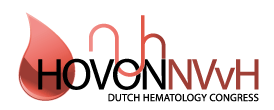The oncogenic function of the intrinsically disordered transcriptional regulator MN1 depends on the chaperone DNAJB6b
Meningioma 1 (MN1) overexpression (OE) has been linked to poor prognosis in acute myeloid leukemia (AML) and plays a role in the progression from myelodysplastic syndrome to AML. In murine models, MN1-OE drives AML transformation by inhibiting myeloid differentiation. However, the precise molecular mechanisms by which MN1 contributes to AML development are still not fully understood.
To investigate this, we performed single-cell RNA-sequencing on 21 AML samples (17 diagnosis and 4 paired relapses), comprising 190,387 cells. Among the diagnosis samples, 8 out of 17 were classified as adverse risk according to the ELN2022 risk stratification.
We observed that MN1 expression was primarily restricted to the leukemic stem cell (LSC) populations in these patients. Differential gene expression analysis in MN1high LSCs identified 267 upregulated genes associated with TNFα, IFNα inflammatory signaling, and B- and T-cell differentiation, while 196 downregulated genes were linked to MYC targets and oxidative phosphorylation. Single cell gene set enrichment analysis (scGSEA) showed that MN1high LSCs exhibited a more quiescent and multilineage profile. Similar gene expression patterns were observed in NB4 cells with MN1-OE, supporting these findings and showing upregulation of LSC-associated and immune-related programs. Molecular profiling of 823 AML patients revealed that MN1high expression often coincided with adverse-risk mutations, and these patients showed enrichment in quiescent LSCs with immature B-cell differentiation and LMPP (lymphoid-primed multipotent progenitor) programs. This suggests that high MN1 expression is associated with an immature LSC-like phenotype, contributing to AML pathogenesis. In primary acute promyelocytic leukemia (APL) samples, lentiviral MN1-OE allowed efficient engraftment in vivo in PDX mouse models, with colonization of secondary organs and splenomegaly, a hallmark of aggressive AML.
MN1 is an intrinsically disordered protein, and we found that its oncogenic function relies on the chaperone DNAJB6 isoform 2 (DNAJB6b). This chaperone likely prevents inappropriate cytoplasmic phase separation of MN1, essential for maintaining its oncogenic properties. Knockdown (KD) of DNAJB6b in AML cell models led to cytosolic retention of MN1, reduced cell survival, and increased sensitivity to drugs like venetoclax (VEN) and cytarabine, alongside enhanced myeloid differentiation with ATRA (all-trans retinoic acid). Similar effects were observed in MN1-OE murine AML models, where DNAJB6b-KD reduced cell proliferation and enhanced drug sensitivity. We performed RNA-seq and ChIP-seq in DNAJB6b-KD cells, identifying direct MN1 targets, including genes like GATA2 and MEIS1, and showed reduced H3K4me3 and H3K27ac marks at key loci associated with MN1 target genes. Finally, ex vivo drug screening revealed bortezomib and tamoxifen as highly effective in MN1high AMLs, offering a potential therapeutic strategy for targeting MN1-dependent AML.
These findings suggest that targeting chaperones like DNAJB6b could present a novel treatment approach for MN1high AML.

